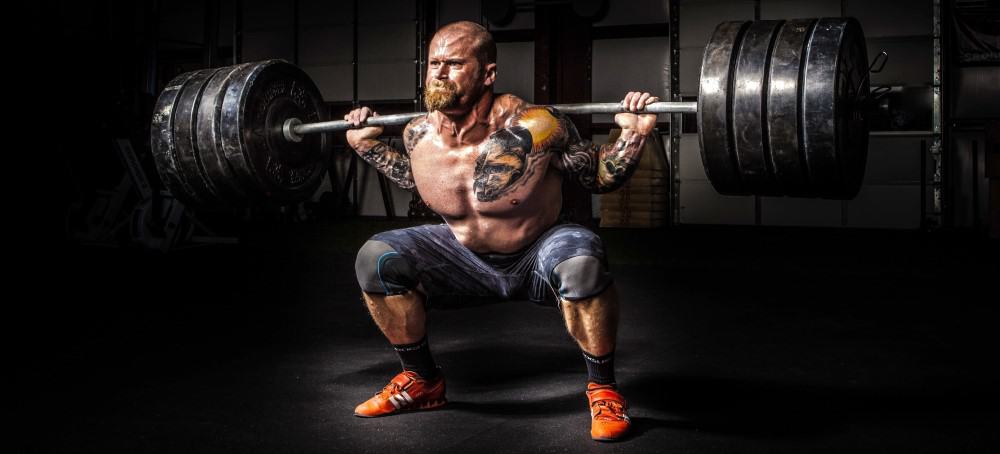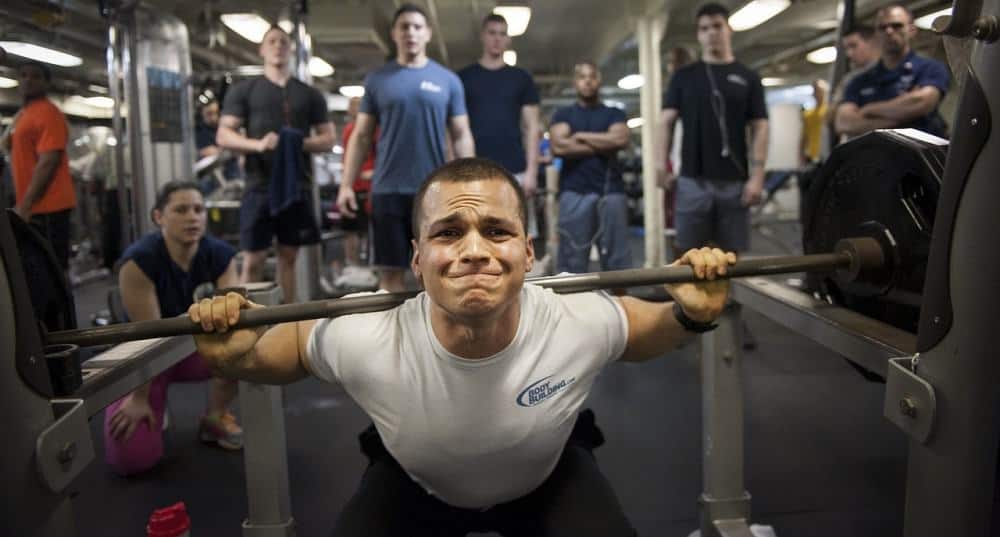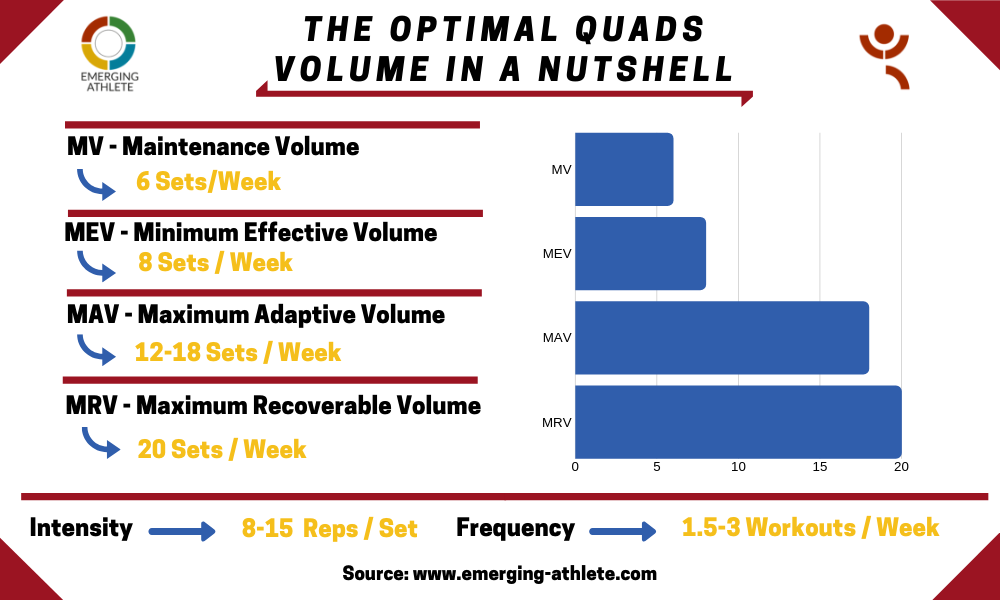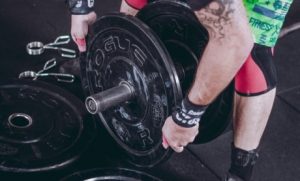After we’ve covered most muscles of the upper body, it’s time to take a look at the oftentimes neglected lower body.
Getting a spot to do bench press in a gym is one of the hardest things whereas squat racks tend to be empty all the time.

Everybody in the gym wants to have that big superhero chest, big arms, and a huge back, but wait a minute…
What about our legs though?
They seem to be relatively unloved muscles.
Of course, leg workouts are exhausting and demanding, but does that justify to skip leg day? And is it even worth to skip them?
The answer possibly disappoints some of you, but putting effort into the leg workout can bring you great advantages.
Benefits from leg workout:
- You’ll build more muscle overall
This is because testosterone is a steroid hormone which is built in your body, essential for our general health and helps us increase our muscle growth.
Heavy compound exercises like squats and deadlifts have shown to stimulate the most impact on our testosterone level.
- You’ll burn more calories
When exercising bigger muscles you’ll burn more calories since these muscles accordingly need more energy.
When you compare biceps workout and leg workout, it becomes explicit that you don’t accumulate as much fatigue as when doing biceps curls instead of squats.
- You won’t look like a chicken
Who haven’t seen guys with big upper bodies but legs that look alike toothpicks?
Come on… Do it for you! It just really doesn’t look any good…
- You’ll reduce the risk of injury
It not only doesn’t look good but you also endanger your own health with such unnatural disproportions.
I mean think about it. Which muscles have to carry out most of the work every day?
Poorly developed legs, glutes, and hamstrings can result in issues such as back pain and ACL injuries (Anterior Cruciate Ligament = knee injuries).
- You’ll improve your big lifts
Furthermore, heavy compound exercises strengthen your core and stabilization ability which will benefit all your future big lifts. Whether it is bench press or deadlifts, your lower body helps to stabilize and enhance your performance.
- You’ll strengthen your abs
This is something that I can approve based on my personal experience.
I don’t really member the last time when I actually worked out my abs…
Compound exercises like squats or deadlifts involve and strain your midsection quite heavily, which is also why a lot of people don’t need that much isolation ab work.
So, guys, I think these abovementioned benefits speak for themselves. If you haven’t been convinced yet, I hope you are now.
For more detailed information on these benefits, you can check out two articles.
The first one is from Men’s Health.
The second one from Shawn Garcia.
Now, since you all can’t wait to hit your next leg day, let’s start and dive into the optimal quads volume!
MV – Maintenance Volume
Why is it important to know your MV?
Extremely straightforward.
Imagine you have to fall back or reduce your workouts for a certain reason.
However, you don’t want to lose your hard acquired gains, do you?
There you go. That’s why it’s important to know how your MV!
Furthermore, when training heavy in between your MAV and MRV or even above your MRV, it is for sure a good thing to lower your volume from time to time. This helps to desensitize your body and prepare for new stimuli in your next mesocycle.
Summing up, it is crucial to know where your MV lies to ensure the maintenance of your muscles while still keeping the volume appropriate within the “deload phase”.
But how much work is necessary to maintain your current quad’s size?
MV: 6 sets/week
The MV for quads is about 6 heavy sets/week.
So, if you have to back off from extensive leg workout because you want to prioritize other muscles, about 6 sets/week will be sufficient to maintain your current size.
Of course, there are exceptions in both directions. Some might need more to maintain whereas others need less volume. I can’t precisely tell you what works best for you, thus it’s indispensable for you to try out over and over again.
MEV – Minimum Effective Volume
Why is it important to know your MEV?
Simple. Just like it’s important to know how much volume your quads need to maintain its current size, it is at least of similar importance to know how much volume you need to grow them.
How much is at least required to stimulate our quads to grow?
MEV: 8 sets/week
The Minimum Effective Volume tends to be around 8 sets/week for quads. If your current program contains less than 8 sets/week, this is probably not enough to create growth in your quads.
Thus, a good program starts around 8 sets/week. During the following weeks of your mesocycle, it is crucial to increase the volume gradually and steadily.
As always, these are only average figures and can vary individually!
MAV – Maximum Adaptive Volume
Why is it important to know your MAV?
Do you want to train all the time with the least effective muscle growth?
Exactly, I doubt that!
In order to stimulate the best possible muscle growth, we need to put more effort into our workout. Within the MAV apparently, most of the growth happens, so this is precisely the range what we’re looking for!
With this in mind, it is important to know the MAV to maximize muscle growth.
Which values apply to the quads MAV?
MAV: 12-18 sets/week
The MAV which refers to the area where most of the growth happens tends to be around 12-18 sets/week for most people.
If you’re way off this benchmark, you’re probably either doing too much or too little. But if it still works for you, you can definitely stay with it.
But most individuals the MAV seems to settle down between 12-18 sets/week.
MRV – Maximum Recoverable Volume
Sooner or later in your mesocycle program, you’ll reach a plateau. Your performance begins to stagnate or even decrease.
This is an indication that you probably overreached your MRV.
What does that mean?
The MRV refers to the Maximum Recoverable Volume which describes the maximum amount of work from which your body can fully recover.
In other words, the maximum amount of work that your body can sustain until your performance begins to suffer.
Why is it important to know your MRV?
Pretty obviously. I suppose nobody wants to take a compelled break on the ground of having accumulated too much volume.
For this reason, it is very crucial to know where your MRV lies to keep your body recovered and avoid superfluous breaks.
Having said that, where can we anticipate the MRV?
MRV: 20 sets/week
This means 20 working sets/week for quads is on average what most people can recover from.
As an illustration, this could look like: 5 sets of squats + 5 sets of leg press on Monday and 5 sets of Romanian deadlifts + 5 sets of barbell lunges on Thursday.
Frequency
How frequent can and should we train for the optimal quads volume?
1.5 – 3 workouts/week
This depends on your development level, your strength, and your size. If you have really big quads, their gonna take a long time to recover between sessions from a heavy workout.
If you’re really jacked, you might have to train less frequently, up to one big workout and a smaller one per week (=1.5).
However, most people can train quads 2-3 times/week and still get away fine with maximum benefits.
Intensity
How intense should I train for the optimal quads volume?
8-15 reps/set
A lot of people claim that you need to squat heavy to grow, right?
The reality looks a bit different, its the volume that makes you grow!
If you train with 3-5 reps/sets, this definitely makes you strong. But, if you’re aiming for the physique aspect, it is more efficient to train quads on average with 8-15 reps/sets because it causes less fatigue per unit/volume.
This will provide enough volume as well as decent intensity to stimulate proper growth in your quads.
From time to time you can even go higher with 20+ reps/set even though I wouldn’t recommend staying with it for longer than one month in a row.

Quads workout – Exercises
Which exercises work best for the optimal quads volume?
Below, I’ve listed the most common and effective exercises for massive quads, from my point of view.
- Barbell Back Squat
- Barbell Front Squat
- Dumbbell and Barbell Lunge (All kinds of variations, e.g. Bulgarian Split Squats)
- Leg Press
- Hack Squat (Machine)
In general, one heavy leg exercise is enough per workout. For example, after heavy back squats, you could follow up with isolation exercises like the leg press.
I recommend to choose 2-3 leg exercises and stick to them for 2-3 mesocycles. If you include all quad exercises within one mesocycle, what you’re gonna do in the next cycle?
Exactly, you already ran out of variation, which is a thing that you definitely want to avoid in your early workout stage.
Especially for beginners who’re training about less than 2-3 years, 2-3 different quad exercises for 2-3 mesocycles is enough.
For folks, who’ve been working out for over 10 years, you might need to change your exercises every mesocycle to increase the variety and stimulate new incentives.
Range of Motion
A lot of people squatting will say: “I don’t feel my quads while doing squats”…
If you watch them, you will probably see them only going half way down…
Of course, you don’t feel squats if you leave out half of the range of motion…
The range of motion is a huge thing for quad training.
Take squats, leg press or hack squats, you should really focus on the maximum range of motion safely with a good technique, which means a relatively close stand, your upper back upright and lower back flat.
Why do people neglect the full range of motion?
For the same reason why people skip leg days because it’s heavy work that fatigue and exhausts you a lot…
When obeying full range of motion, your quads really get destroyed with minimal effort and eventually, this will help you to grow.
Conclusion
All things considered, below I’ve listed all the important facts that you need to remember for the optimal quads volume.

Exercises: Some of the most common and effective exercises that you should implement into your quad training program are: Back squats, Front squats, Hack squats, lunges and leg press.
After all, remember that volume is the key factor for muscle hypertrophy!
Range of Motion: As always, never ever sacrifice full range of motion for heavier weights that you can’t control.
If you do squats with a maximum range of motion safely, you’re quads really get destroyed with minimum effort and still cause the most growth.
Practical Tips
In this section, I gathered some techniques that you can implement into your training program for the optimal quads volume.
Don’t use them too often otherwise, the stimulus gets burned out very quickly.
Super sets: For example, do almost as many reps you can do on the leg press and then follow up with pre-loaded squats and repeat as many reps as possible.
Here’s a full article about supersets that I wrote, make sure to check it out for further information!
Drop sets: This is really great on machines. Do as many reps as you can, let your partner take off some weights or clip in the weight to a lower stack and go again. And again.
Likewise, for Drop sets, I went in-depth in a separate article about this topic. If you want to know more, just click the link.
Giant sets: Set yourself a certain number of total reps that you want to accomplish and do as many sets as you need to achieve that number.
Special shout-out to Dr. Mike Israetel, we really value his knowledge and the content that he shares with you guys on his YT channel and his blog.
Definitely check out his video about quad volume!
How often do you train your quads?
If this article about the optimal quads volume was helpful for you, we would really appreciate if you can share this with your friends and family, sharing is caring you know
And for those folks who skip their legday quite often, I hope I could change your opinion on that 😉
If you still have some questions on quads training or whatever fitness & nutrition topic, leave a comment below or you can reach us through our social media channels.
Cheers guys,
Claas




